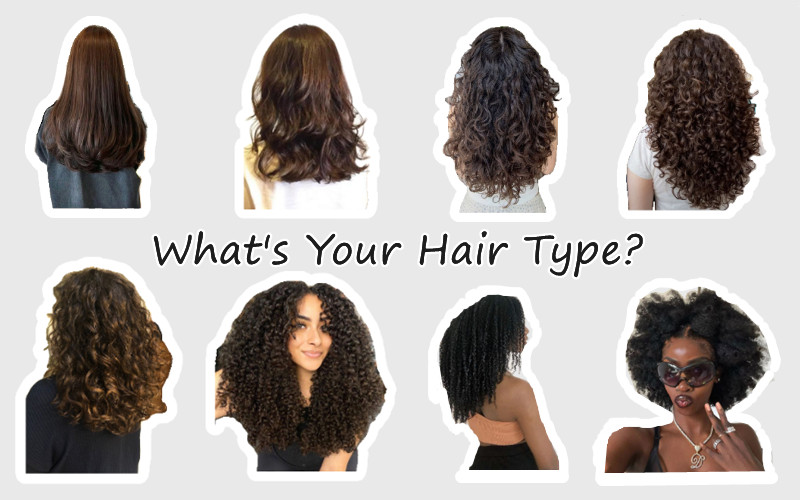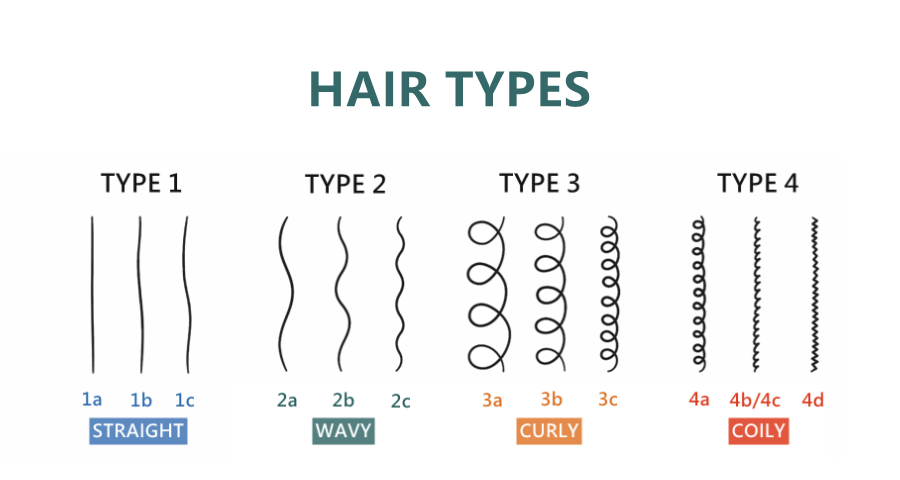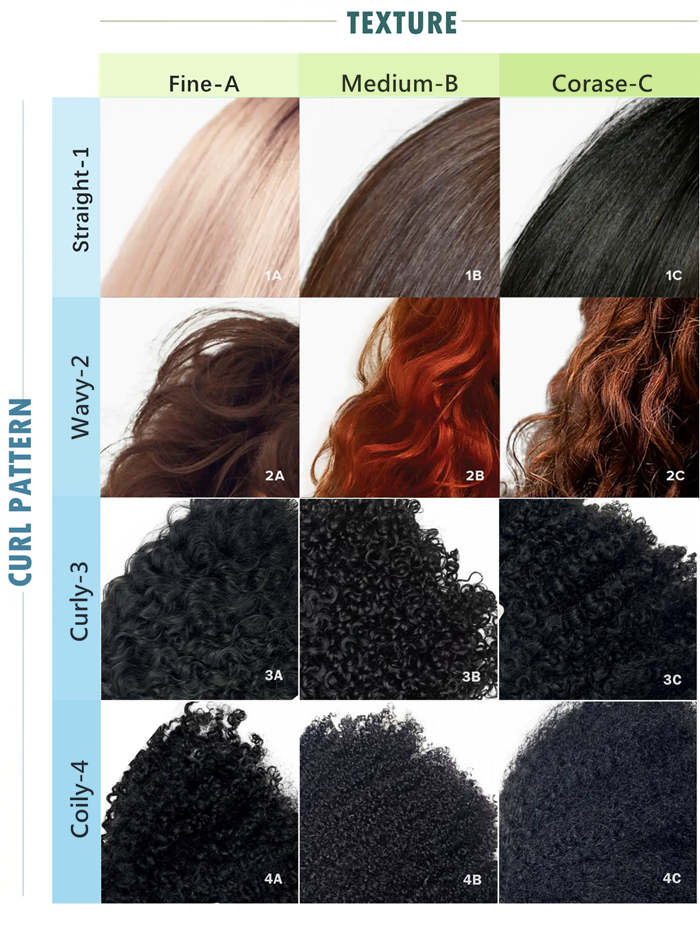
Why Identifying Your Hair Type Matters
Knowing your hair type isn’t just about labeling your curls or waves—it’s the key to unlocking the best hair care routine for your strands. Identifying your hair type helps you:
- Choose the right products for your specific texture
- Understand how your hair responds to moisture and styling
- Prevent damage by using techniques suited to your hair’s needs

Understanding Your Hair’s Texture: Single Strand Thickness
Before we dive in, it's important to note that all the methods we discuss for identifying your hair type are based on hair that has been air-dried naturally, without any styling products. This ensures the most accurate assessment of your hair's true characteristics.
Let's start by looking at single strand thickness. This refers to the diameter of individual hair strands, which can vary regardless of whether your hair is straight, wavy, curly, or coily.
- Texture A - Fine hair: Feels soft and lightweight, prone to oiliness and breakage.
- Texture B - Medium hair: Holds styles well and is less prone to oil buildup.
- Texture C/D - Coarse hair: Thick, strong, and often more resistant to heat and moisture loss.
How to Determine Your Curl Pattern
The curl pattern classification system, introduced by celebrity stylist Andre Walker, divides hair into four main types (1–4) with further subcategories (A, B, C, D) based on texture and curl tightness.
Type 1: Straight Hair
- 1A: Super fine, smooth, and flat, with no natural waves.
- 1B: Slightly thicker with more volume and obvious feel than 1A.
- 1C: Thick, coarse, and straight but with a hint of natural movement.
Type 2: Wavy Hair
- 2A: Loose, soft waves forming a slight "S" shape.
- 2B: More defined waves, often with some frizz.
- 2C: Thick, coarse waves that border on curls, prone to frizz.
Type 3: Curly Hair
- 3A: Loose, shiny curls with a well-defined "S" shape.
- 3B: Springy, bouncy ringlets with medium tightness.
- 3C: Tight, corkscrew curls with a lot of volume and texture.
Type 4: Coily/Kinky Hair
- 4A: Defined, tight coils that hold a visible "S" pattern.
- 4B: More of a "Z" pattern with less definition and more shrinkage.
- 4C: Tightly packed coils with little definition and high shrinkage.
- 4D: Densely packed, ultra-tight coils with maximum shrinkage.
Hair Porosity Differences Across Hair Types
Hair porosity refers to your hair's ability to absorb and retain moisture. While porosity varies from person to person, certain hair types often share common porosity characteristics.
Type 1 (Straight Hair) – Typically Low Porosity
Cuticles are tightly packed, making it difficult for moisture to penetrate.
Hair tends to repel water, and products often sit on the surface rather than being absorbed.
Type 2 (Wavy Hair) – Generally Medium to Low Porosity
Cuticles are slightly more open than Type 1 but still relatively resistant to moisture.
This hair type can experience product buildup if heavy or overly rich formulas are used.
Type 3 (Curly Hair) – Ranges from Medium to High Porosity
Looser curls often have medium porosity, allowing for balanced moisture absorption and retention.
Tighter curls may lean toward higher porosity, making them more prone to dryness and frizz.
Type 4 (Coily/Kinky Hair) – Mostly High Porosity
Cuticles are widely spaced, leading to rapid moisture absorption but also quick moisture loss.
This hair type is highly prone to dryness, shrinkage, and damage if not properly moisturized and protected.
Hair Type Chart: Quick Reference Guide

Best Hair Care Tips for Each Hair Type
Once you’ve identified your hair type, here’s how to care for it:
Straight Hair (Type 1): Use lightweight, volumizing products to prevent oiliness.
Wavy Hair (Type 2): Enhance waves with curl creams and avoid heavy oils.
Curly Hair (Type 3): Hydrate with leave-in conditioners and define curls with gel.
Coily Hair (Type 4): Focus on deep conditioning and protective styling to prevent dryness.
Can Your Hair Type Change Over Time?
Yes! Several factors can alter your hair type over time:
Hormonal changes: Pregnancy, aging, and stress can affect hair texture.
Heat and chemical treatments: Frequent heat styling and chemical processing can loosen curls or cause damage.
Hair health: Damage from neglect or improper care can lead to changes in texture and porosity.
Final Thoughts
Understanding your hair type is the first step toward achieving healthier, more manageable hair. By recognizing different hair types, porosity characteristics, and the factors that can influence changes in your hair, you’ll be better equipped to assess its needs at every stage. This knowledge allows you to select care products that maintain optimal moisture balance and choose extensions and wigs that complement your styling goals.
Whether your hair is silky straight, wavy, curly, coily, or kinky, embracing your natural texture and adopting the right care routine will help your hair thrive. Looking for personalized product recommendations or step-by-step hair care tutorials? Stay tuned for more tips and insights in our upcoming blogs!

Comments(0)